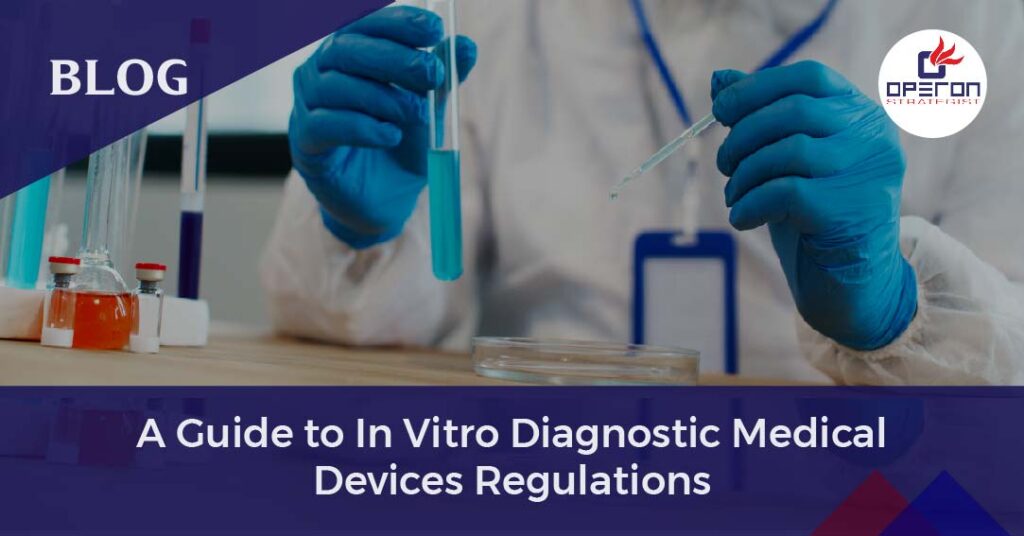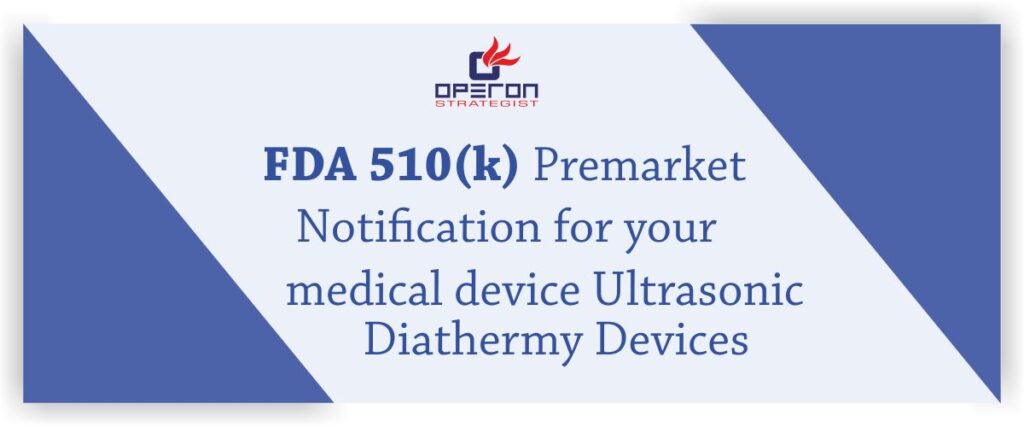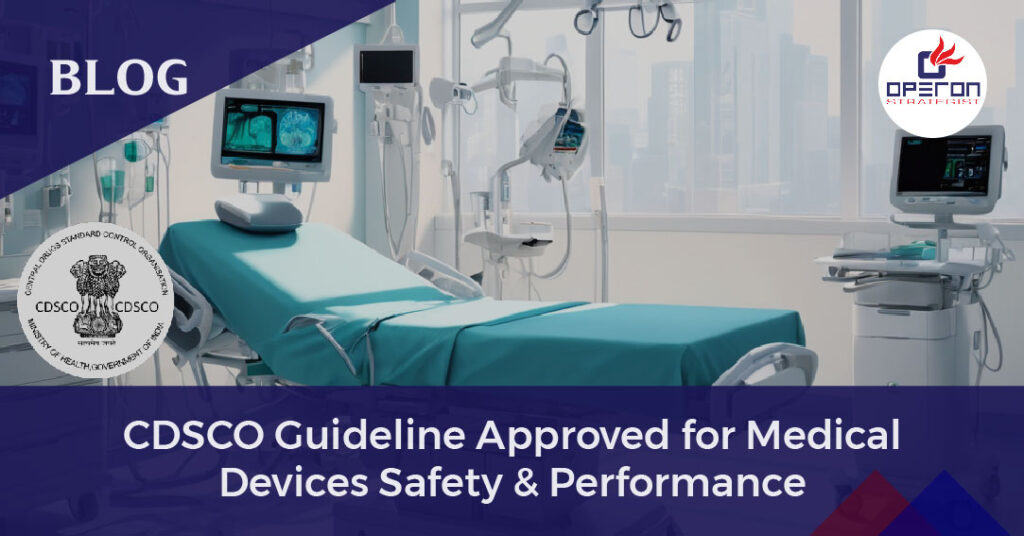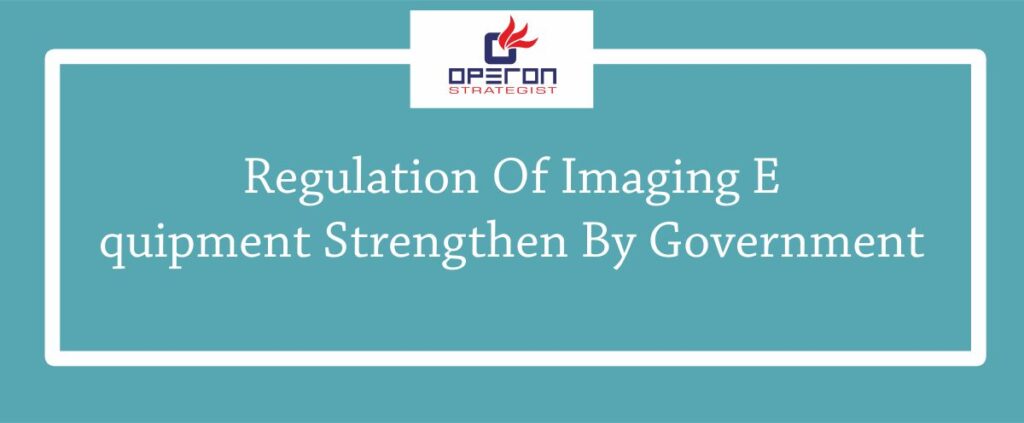Welcome to our comprehensive guide on the intricate world of In Vitro Diagnostic (IVD) medical devices regulations. In this guide, Operon Strategists shed light into the core principles, pre-market and post-market considerations, quality management, and the global market landscape for IVDs. Let’s embark on this journey to help you navigate the regulatory waters successfully.
What is IVD's: In Vitro Diagnostic?
In Vitro Diagnostic (IVD) devices encompass a diverse range of products used for diagnosing diseases or conditions, monitoring health, and assessing treatment outcomes. In vitro means glass that means the tests are usually conducted in glass test tubes. The examples of IVDs include Pregnancy test device, Glucometer kits to monitor blood sugar, HIV test kit, COVID 19, and many more.
Understanding the IVDs is crucial as the regulatory landscape may differ based on the type and intended use of these devices.
Get in touch with an Operon Strategist to find out more about IVDs that you need to understand in order to ensure that your IVD device meet all regulatory requirements.
Looking for Regulatory Services?
Here, we provide consultations for your queries.
Global Regulatory Framework for IVD Device
IVD regulations vary from one region to another, and it’s important for manufacturers to understand and comply with the specific requirements of the markets they intend to enter. Key organizations like the FDA and EU IVDR plays a significant role in shaping these regulations.
Here is an overview of the key elements of the global regulatory framework for IVDs:
1. US FDA 510(k) Regulations for IVD Devices:
United States is a major market for IVD devices. IVDs are categorized into Class I, II, or III based on their level of risk, with Class III devices requiring the most stringent regulatory oversight.
Manufacturers need submit 510(k) premarket notifications, Pre-market Approval (PMA) applications, or follow the De Novo pathway for regulatory clearance or approval.
2. European Union IVD Regulation (EU IVDR):
The European Union (EU) has introduced the In Vitro Diagnostic Regulation (IVDR) to replace the previous In Vitro Diagnostic Directive (IVDD). It mandates conformity assessment by notified bodies and the assignment of Unique Device Identifiers (UDIs).
Operon Strategist can provide an in-depth overview of the IVDR and its implications for manufacturers, including the classification and conformity assessment procedures.
Classification of EU IVD Medical Devices
The IVDR specifies four risk-based classes (A–D) for In-vitro diagnostics (IVD) devices. Class A includes IVD devices with the lowest risk and is the only class that does not fall under the Notified Body (NB) supervision. Class D is considered the highest-risk category.
Class | Risk Profile |
A | Low individual risk and a low risk to public health |
B | Moderate individual risk and/or low risk to public health |
C | High individual risk and/or medium risk for public health |
D | High individual risk and/and high risk for public health |
Read more about GSPR Requirements for EU MDR and IVDR
One point of the new IVDR is to incorporate clearer commitments for those associated with manufacturing and providing IVDs. There is expanded accentuation on traceability all through the entire supply chain, with the presentation of a Unique Device Identification system and new standards for clinical proof, which are to be provided and open on the European Databank of Medical Devices. There will likewise be increasingly thorough post-market cautiousness revealing and observation necessities, adjusting the regulations of IVDs all the more intimately with that of medicines inside the EU. Along these lines the Regulation intends to adjust proportionate dependable regulation with tending to an undeniably innovative way to deal with healthcare, remembering for such algorithms as calculations and programming. Recently EU regulatory framework is issued for the sound functioning of regulations. Operon Strategist medical device regulatory consultant is working with different regulatory bodies so that we can assist our clients as per their regulatory need and provide them with better results.
What are the Benefits of In Vitro Diagnostics?
IVD is used to track a person’s general health. It has the ability to diagnose and prevent diseases and other medical issues; it may also be utilized in precision medicine to determine the optimal course of treatment for specific patients. Continue reading to learn about the primary advantages of IVD tests.
Early detection of diseases
Prevent the spread of diseases
Improve patient care and management
How to Get IVDR Certification?
To obtain IVDR certification, an IVD manufacturer must follow these steps:
- Identify the correct risk classification for the device.
- Select a notified body and submit the necessary documentation and technical files.
- Undergo a conformity assessment by the notified body to demonstrate compliance with the IVDR.
- If the device meets the requirements, the notified body will issue an IVDR certificate.
- The manufacturer can then affix the CE mark to the device and market it within the EU.
Quality Management System Requirements For In Vitro Diagnostic Devices
Quality Management System is one of the most significant requirements according to the new IVDR. The manufacturers shall continuously create and maintain informative QMS for their products. The Article 10(8) states that an adequate process should be implemented so that the production meets the IVDR conformity. A manufacturer’s QMS should include the parameters as follow:
- Design changes
- Process verification/validation
- Production process controls
- Regulatory compliance
- Risk management
- Performance evaluation
- Post-Market Surveillance
The IVDR emphasis on Documentation, Implementation and Maintaining Quality Systems.
Post-Market Surveillance and Vigilance for IVD
Many regions require robust post-market surveillance and vigilance systems to monitor the safety and performance of IVDs and report adverse events.
Manufacturers must establish effective post-market surveillance and vigilance systems to monitor the safety and performance of their IVD devices.
Contact Operon Strategist, your trusted IVDR consultant to Ensure compliance, streamline processes, and navigate the complex landscape of IVD regulations. Get in touch today for tailored solutions to meet your regulatory needs.
FAQs
What is an example of a IVDR?
Here are examples of IVDs classified into different risk classes along with examples of each class:
1. Class I (Low Risk): Typically subject to the least regulatory controls.
Example: Pregnancy Test Kits
2. Class II (Moderate Risk): Requires regulatory oversight, including performance standards and labeling requirements.
Example: Blood Glucose Monitoring System
3. Class III (High Risk): Subject to rigorous regulatory scrutiny, including clinical data requirements and stringent quality control.
Example: HIV viral load testing assays
4. Class IV (Highest Risk): Subject to the most stringent regulatory requirements, including extensive clinical data, quality control, and post-market surveillance.
Example: Human papillomavirus (HPV) DNA tests for cervical cancer screening
What is the CDCSO classification of IVD?
Class A - Low risk
Class B - Low moderate risk
Class C - Moderate high risk
Class D - High risk
What is MDR vs IVD?
The MDR requires constant post-market clinical follow-up of the medical device, whereas the IVDR requires post-market surveillance and vigilance of the IVD device. Also, to create a completely compliant PMS system, the two requirements request different different post-market surveillance deliverables.
- adminhttps://operonstrategist.com/author/admin-2/
- adminhttps://operonstrategist.com/author/admin-2/
- adminhttps://operonstrategist.com/author/admin-2/
- adminhttps://operonstrategist.com/author/admin-2/




